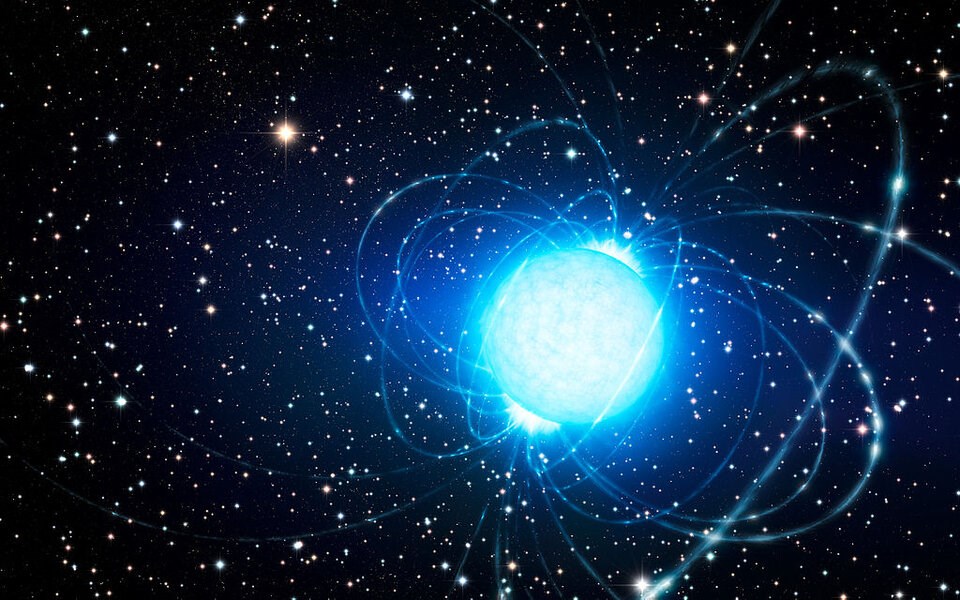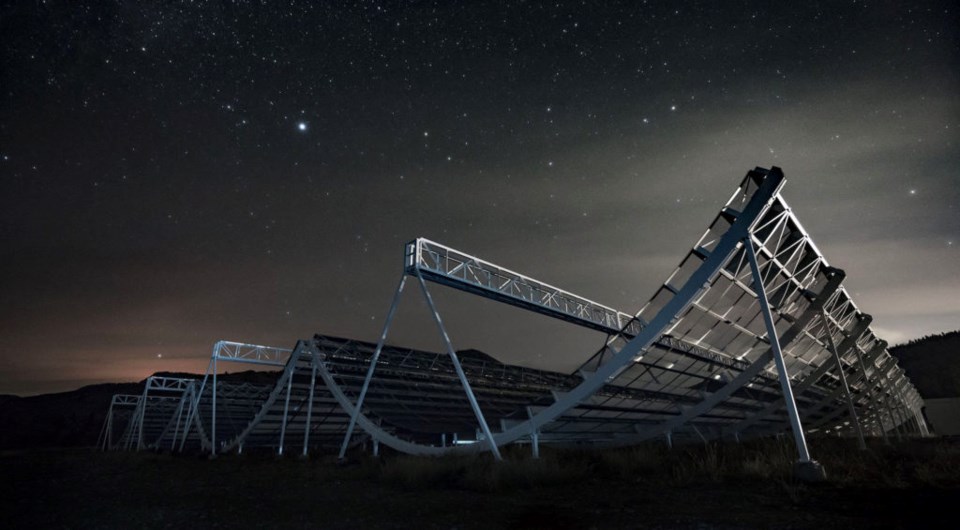Scientists working with a powerful telescope in British Columbia have tracked down 25 repeating cosmic radio signals emanating from far outside the Milky Way.
Results from a published Wednesday in nearly double the number of discovered repeating fast radio bursts (FRB) — cosmic explosions that last only a few milliseconds but burst from distant galaxies with the energy released by the sun over an entire year.
“Fast radio bursts are extremely mysterious things” said Adam Dong, a doctoral student at the University of British Columbia and a co-author on the study. “We don't know their origins.”
The latest discoveries — which also include 14 candidate "repeaters" — were detected between 2019 and 2021 as part of the 91ԭ�� Hydrogen Intensity Mapping Experiment (CHIME)/FRB, a collaboration which spans several top-tier research institutes in Canada and the U.S., including the University of British Columbia, the University of Toronto and McGill.
To capture the radio signals, the researchers used the CHIME radio-telescope in British Columbia’s Okanagan Valley. The telescope has no moving parts. Instead, its meshed array, shaped like four snowboarding half-pipes, scans a patch of sky directly overhead. As the Earth rotates, it covers the entire northern hemisphere in a single day, something no other telescope in the world can do.
For his part, Dong developed an algorithm to weed through a catalogue of extraterrestrial radio bursts picked up by the B.C. telescope, and figure out which ones were repeating. His colleagues then confirmed they were actually seeing repeating signals, said Dong.
Some of the flashing radio signals were found to return multiple times a day, while others take years to come back.
Where they come from, however, is not clear. Because the radio bursts repeat, scientists have ruled out supernovas, as stars usually only explode once.
Dong says there’s some evidence the signals could be coming from , neutron stars with dense, highly-magnetized cores formed after a star much bigger than our sun explodes.

A radio-telescope of all trades
The CHIME telescope was originally designed to map interstellar hydrogen gas, the most abundant element in the universe. Measure the gas and you can get a proxy for the expansion history of the universe, something scientists have been trying to understand for more than 100 years.
That began with astronomer Vesto Slipher, who in 1912 observed how distant galaxies appeared red. By 1929, Edwin Hubble concluded the red light was the result of distant galaxies moving away from the Milky Way at ever increasing speeds. In what became known as Hubble’s Law, the stronger the “redshift” effect, the further away from each other and the faster galaxies were moving.
Since then, some astronomers have suggested “dark energy” is driving the universe’s expansion rate, but the science is not settled, and why galaxies are moving away from each other at ever increasing velocities is still not clear.
That’s where CHIME comes in: by observing hydrogen gas in distant galaxies thought to be strongly affected by dark energy, the telescope looks to detect what astronomers call , an imprint of sound waves left over from the Big Bang nearly 14 billion years ago.
The size of those waves was set by the conditions of the early universe, which means how they have changed since can be used as a cosmic ruler to gauge how fast the universe is expanding.
Just as the CHIME telescope continues to measure hydrogen — and how fast the universe is expanding at its margins — it also offers a way to shine a light into the dimly lit spaces between galaxies.
In 2020, a group of astronomers measured how fast radio bursts — essentially light — changed as they passed through space. The dispersion pattern, they found, allowed them to calculate the in between galaxies. Others, meanwhile, have used the fast radio bursts as a tool to explore the .
Tracking down the "repeaters," says Dong, is vital if scientists want to use them as a way to probe some of the darkest, least understood regions of space. Find the repeaters and astronomers can refine their calculations and increasingly pinpoint their origin.
“The point with repeaters is that they repeat,” he said. “They're a great probes of the intergalactic medium.”

A powerful telescopes gets 'outriggers'
The Okanagan CHIME radio-telescope can already detect ten to 100 times more fast radio bursts than all other telescopes combined. Those capabilities are only increasing.
In 2022, the CHIME collaboration received funding to build “outrigger” telescopes outside Princeton, B.C., Hat Creek, Calif., and within a National Radio Quiet Zone north of West Virginia’s Seneca State Forest.
The B.C. telescope can now track the position of a fast radio burst to a patch of sky roughly the same size as the full moon, according to Patrick Boyle, the CHIME/FRB Outriggers project’s senior project manager.
The three new outrigger telescopes would reduce that patch of sky to the size of a quarter held at roughly 40 kilometres.
“This gives us amazing capabilities of pinpointing where these fast radio bursts are coming from,” said Dong.

